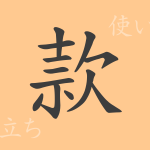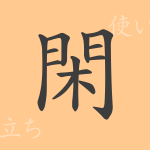In the Japanese language, there are various kanji characters that enrich the meaning of words. “間” ( Ma/Aida) is one such kanji deeply rooted in our daily lives. In this article, we will explore the origins of the kanji “間,” its modern usage, and its allure. We will unravel the significance of “間” in Japanese culture and language, incorporating its readings and idiomatic expressions.
The Origin of 間 (Ma-no-na-ri-ta-ti)
The kanji “間” originated in ancient China. It is believed to have been used as a symbol to convey information by splitting bamboo in the distant past. The split in the bamboo, “間,” came to represent meanings such as gaps between objects or companionship, and it was eventually used to express various concepts.
The Meaning and Usage of 間
“間” is a polysemous kanji that refers to different concepts such as “space,” “time,” and “relationships.” When referring to space, it signifies the gap between objects or a room. In terms of time, it denotes periods or moments. Furthermore, in the context of relationships between people, it is used to mean companions or the nature of relationships.
Readings, Number of Strokes, and Radical of 間
“間” has multiple readings in Japanese.
- Readings: The on’yomi (Chinese reading) is “Kan”, and the kun’yomi (Japanese reading) is “Aida” and “Ma”.
- Number of Strokes: “間” consists of 12 strokes.
- Radical: The radical is 門部 (mongamae), which classifies it among kanji related to gates.
Idioms, Phrases, and Proverbs Using 間 and Their Meanings
There are numerous idioms, phrases, and proverbs in Japanese that include “間.” For example, “間違い” (machigai) means something incorrect, “時間” ( jikan) refers to the flow of time, and “間柄” ( aidagara) denotes the relationship between people. In proverbs, “間に合わせる” ( ma-ni-a-waseru) means to make it in time for a necessity, indicating a flexible and adaptable response.
Conclusion on 間
Through this article, we have seen the rich meanings and uses of the kanji “間.” From space to time to human relationships, “間” is closely tied to our lives. Understanding the depth of this single character can enrich our expression in the Japanese language. It symbolizes the subtlety of Japanese culture, and we should continue to cherish “間” moving forward.

























